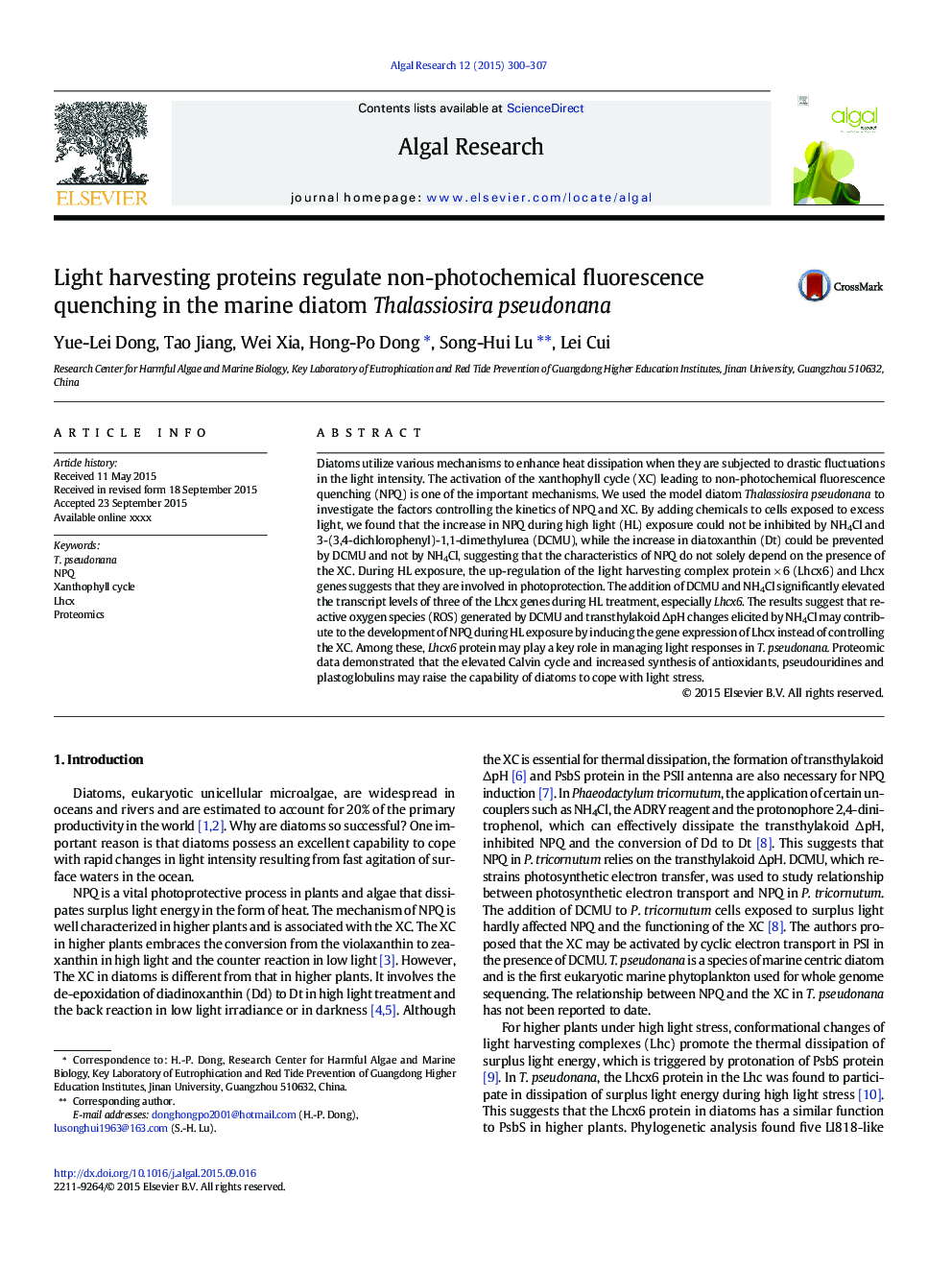| Article ID | Journal | Published Year | Pages | File Type |
|---|---|---|---|---|
| 8087848 | Algal Research | 2015 | 8 Pages |
Abstract
Diatoms utilize various mechanisms to enhance heat dissipation when they are subjected to drastic fluctuations in the light intensity. The activation of the xanthophyll cycle (XC) leading to non-photochemical fluorescence quenching (NPQ) is one of the important mechanisms. We used the model diatom Thalassiosira pseudonana to investigate the factors controlling the kinetics of NPQ and XC. By adding chemicals to cells exposed to excess light, we found that the increase in NPQ during high light (HL) exposure could not be inhibited by NH4Cl and 3-(3,4-dichlorophenyl)-1,1-dimethylurea (DCMU), while the increase in diatoxanthin (Dt) could be prevented by DCMU and not by NH4Cl, suggesting that the characteristics of NPQ do not solely depend on the presence of the XC. During HL exposure, the up-regulation of the light harvesting complex protein ÃÂ 6 (Lhcx6) and Lhcx genes suggests that they are involved in photoprotection. The addition of DCMU and NH4Cl significantly elevated the transcript levels of three of the Lhcx genes during HL treatment, especially Lhcx6. The results suggest that reactive oxygen species (ROS) generated by DCMU and transthylakoid ÎpH changes elicited by NH4Cl may contribute to the development of NPQ during HL exposure by inducing the gene expression of Lhcx instead of controlling the XC. Among these, Lhcx6 protein may play a key role in managing light responses in T. pseudonana. Proteomic data demonstrated that the elevated Calvin cycle and increased synthesis of antioxidants, pseudouridines and plastoglobulins may raise the capability of diatoms to cope with light stress.
Keywords
Related Topics
Physical Sciences and Engineering
Energy
Renewable Energy, Sustainability and the Environment
Authors
Yue-Lei Dong, Tao Jiang, Wei Xia, Hong-Po Dong, Song-Hui Lu, Lei Cui,
